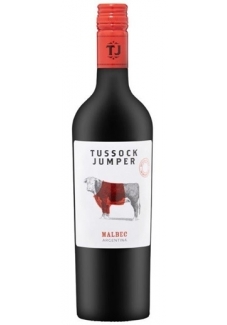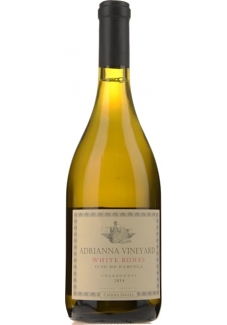Argentina is the fifth largest producer of wine in the world. Argentine wine, as with some aspects of Argentine cuisine, has its roots in Spain. During the Spanish colonization of the Americas, vine cuttings were brought to Santiago del Estero in 1557, and the cultivation of the grape and wine production stretched first to neighboring regions, a...
Argentina is the fifth largest producer of wine in the world. Argentine wine, as with some aspects of Argentine cuisine, has its roots in Spain. During the Spanish colonization of the Americas, vine cuttings were brought to Santiago del Estero in 1557, and the cultivation of the grape and wine production stretched first to neighboring regions, and then to other parts of the country.
Historically, Argentine winemakers were traditionally more interested in quantity than quality with the country consuming 90% of the wine it produces (45 liters per year or 12 U.S. gallons per year per capita according to 2006 figures). Until the early 1990s, Argentina produced more wine than any other country outside Europe, though the majority of it was considered unexportable. However, the desire to increase exports fueled significant advances in quality. Argentine wines started being exported during the 1990s, and are currently growing in popularity, making it now the largest wine exporter in South America. The devaluation of the Argentine peso in 2002 further fueled the industry as production costs decreased and tourism significantly increased, giving way to a whole new concept of enotourism in Argentina.
The most important wine regions of the country are located in the provinces of Mendoza, San Juan and La Rioja. Salta, Catamarca, Río Negro and more recently southern Buenos Aires are also wine producing regions. The Mendoza province produces more than 60% of the Argentine wine and is the source of an even higher percentage of the total exports. Due to the high altitude and low humidity of the main wine producing regions, Argentine vineyards rarely face the problems of insects, fungi, molds and other grape diseases that affect vineyards in other countries. This allows cultivating with little or no pesticides, enabling even organic wines to be easily produced.
There are many different varieties of grapes cultivated in Argentina, reflecting the country's many immigrant groups. The French brought Malbec, which makes most of Argentina's best known wines. The Italians brought vines that they called Bonarda, although Argentine Bonarda appears to be the Douce noir of Savoie, also known as Charbono in California. It has nothing in common with the light fruity wines made from Bonarda Piemontese in Piedmont. Torrontés is another typically Argentine grape and is mostly found in the provinces of La Rioja, San Juan, and Salta. It is a member of the Malvasia group that makes aromatic white wines. It has recently been grown in Spain. Cabernet Sauvignon, Syrah, Chardonnay and other international varieties are becoming more widely planted, but some varieties are cultivated characteristically in certain areas.
Argentina There are no products in this category
Subcategories
-
Reds
Argentina is the fifth largest producer of wine in the world, as well as being the largest wine producing country in South Amercia, Argentina is also one of the oldest. Argentine wine, as with some aspects of Argentine cuisine, has its roots in Spain. During the Spanish colonization of the Americas, vine cuttings were brought to Santiago del Estero in 1557, and the cultivation of the grape and wine production stretched first to neighboring regions, and then to other parts of the country.
These varieties are often used today for bulk jug wine sold in 1 liter cardboard cartons or as grape concentrate which is exported worldwide with Japan being a considerably large market. In the late 20th century, as the Argentine wine industry shifted it focus on premium wine production capable for export, Malbec arose to greater prominence and is today the most widely planted red grape variety followed by Bonarda, Cabernet Sauvignon, Syrah and Tempranillo. The influence of Italian immigrants has brought a variety of Italian varietals with sizable plantings throughout Argentina-including Barbera, Dolcetto, Freisa, Lambrusco, Nebbiolo, Raboso and Sangiovese.
While the historic birthplace of Malbec is Southwest France, where it is still widely grown in Cahors, and has some presence in Bordeaux, it is in Argentina where the grape receives most of its notoriety. The grape clusters of Argentine Malbec are different from its French relatives; they have smaller berries in tighter, smaller clusters. Malbec wine is characterized by deep color and intense fruity flavors with a velvety texture.
As of 2003 there were over 20,000 ha (50,000 acres) of Malbec. The international variety of Cabernet Sauvignon is gaining in popularity and beside being made as a varietal, it used as a blending partner with Malbec, Merlot, Syrah and Pinot noir. Syrah has been steadily increasing in planting going from 700 ha (1,730 acres) in 1990 to more than 10,000 ha (24,710 acres) in 2003, with the San Juan region earning particular recognition for the grape. Tempranillo (known locally as Tempranilla) is often made by carbonic maceration (similar to Beaujolais); though some premium, old vine examples are made in the Uco Valley.
Red wine production accounts for nearly 60% of all Argentine wine. The high temperatures of most regions contribute to soft, ripe tannins and high alcohol levels.
-
Whites
Argentine wine may be synonymous with red, and Malbec at that, but a host of producers are starting to experiment with white varieties to create wines that speak of their terroir, in a trend that is only set to grow.
The White Wine of Argentina. The Torrontes grape produces the characteristic white wine of Argentina. New bunch, in October. The Torrontes grape is cultivated in the Argentine provinces of Catamarca, La Rioja, Mendoza, Salta, San Juan and Rio Negro. The Torrontes wine made from this white grape is considered the best of its kind in the entire world.
The Pedro Giménez grape (a different but perhaps closely related relative of Spain's Pedro Ximénez) is the most widely planted white grape varietal with more than 14,700 ha (36,300 acres) planted primarily in the Mendoza and San Juan region. The grape is known for its fully bodied wines with high alcohol levels and is also used to produce grape concentrate.
Pedro Giménez, a vestige of Argentina’s white wine dominance, remains the country’s most planted white grape, according to data from the Instituto Nacional de Vitivinicultura. While in rapid decline and primarily used for high-volume wines, the variety is being championed by the likes of sommelier and winemaker Mariana Onofri of Onofri Wines, who treats the grape with respect to produce a lower-alcohol white that she says is a hit in restaurants. Her attitude is shared by producers across the country who are making premium quality wines from white varieties once planted for bulk production. Grapes such as Sémillon and Chenin Blanc, while still some way behind the likes of Torrontés and Chardonnay in terms of area under vine, are finding favour, with examples released from the likes of Catena, Andeluna and El Enemigo.
Argentina’s whites are now being made with a focus on freshness, reduced use of new oak and a desire for the wine to reflect ‘the place’. Techniques such as picking the grapes earlier than normal, controlling the extent of malolactic fermentation and ageing in larger and older oak vessels are contributing to changes in wine style.
Sémillon and Chenin used to be used for table wines, and weren’t considered very prestigious, but over time it has shown results that from old vineyards with low yields they can grow well and produce great wine. Some people who are growing Sémillon are achieving 30 tonnes per hectare, but we only get between seven and eight tonnes.
Not many people are making top-quality Sémillon in Argentina, especially not in blends. Andeluna, based in Tupungato in the Uco Valley, is another producer experimenting with Sémillon.
Some Chief winemakers have recounted how the use of Sémillon started out as an experiment. Some winemakers wanted to develop a new white variety, and started looking for one in the Uco Valley because you can’t bring grapes in from outside.
The discovery of Sémillon growing in Tupungato, in a district called El Peral. For some wine makers first attempt was to create several different fermentations, separating the juice out into three parts. One part was to put into stainless steel, another was to put it into a ceramic vessel, and the rest was placed into used French oak. Then blended all three. Winemakers tasted it with the commercial teams and they loved it
ABN: 11 806 263 393
Liquor Licenses
337 526 06
360 674 16


